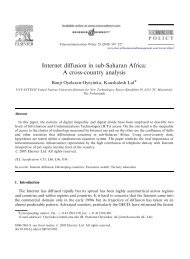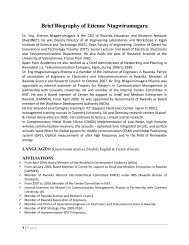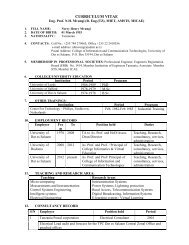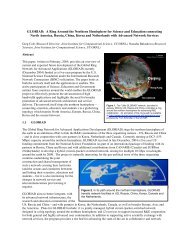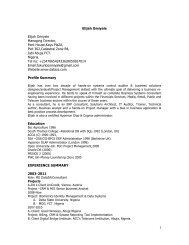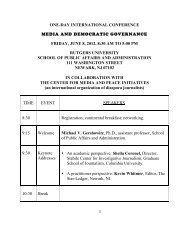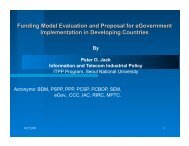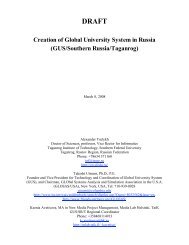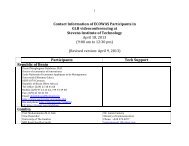Installation of WiMAX - Friends and Partners
Installation of WiMAX - Friends and Partners
Installation of WiMAX - Friends and Partners
Create successful ePaper yourself
Turn your PDF publications into a flip-book with our unique Google optimized e-Paper software.
Financial Proposal<br />
3.2 Portable (802.16 REV E)<br />
The IEEE 802.16e st<strong>and</strong>ard is an amendment to the 802.16- 2004 base specification<br />
<strong>and</strong> targets the mobile market by adding portability <strong>and</strong> the ability for mobile clients<br />
with IEEE 802.16e adapters to connect directly to the <strong>WiMAX</strong> network to the<br />
st<strong>and</strong>ard.<br />
The 802.16e st<strong>and</strong>ard uses Orthogonal Frequency Division Multiple Access<br />
(OFDMA), which is similar to OFDM in that it divides the carriers into multiple<br />
subcarriers. OFDMA, however, goes a step further by then grouping multiple<br />
subcarriers into sub-channels. A single client or subscriber station might transmit<br />
using all <strong>of</strong> the sub-channels within the carrier space, or multiple clients might<br />
transmit with each using a portion <strong>of</strong> the total number <strong>of</strong> sub-channels<br />
simultaneously.<br />
4. LICENSED AND LICENSE-EXEMPT WIMAX TECHNOLOGIES FOR FIXED<br />
ACCESS<br />
Governments around the world recognize the value <strong>of</strong> innovations associated with<br />
open st<strong>and</strong>ards <strong>and</strong> license-exempt solutions <strong>and</strong> have established frequency b<strong>and</strong>s<br />
available for use by licensed <strong>and</strong> license-exempt <strong>WiMAX</strong> technologies. However, to<br />
impose some control over license-exempt solutions to mitigate the potential for<br />
interference, some governments stipulate power requirements for highpower<br />
<strong>and</strong> low-power operations.<br />
Each geographical region defines <strong>and</strong> regulates its own set <strong>of</strong> licensed <strong>and</strong> licenseexempt<br />
b<strong>and</strong>s, as shown in Table 1. To meet global regulatory requirements <strong>and</strong><br />
allow providers to use all available spectrums within these b<strong>and</strong>s, the 802.16-2004<br />
st<strong>and</strong>ard supports channel sizes between 1.5 MHz <strong>and</strong> 20 MHz.<br />
Table 1: B<strong>and</strong>s <strong>and</strong> frequencies available for <strong>WiMAX</strong>.<br />
4.1 LICENSED BANDS: 2.5 GHZ AND 3.5 GHZ<br />
The 2.5 GHz b<strong>and</strong> has been allocated in much <strong>of</strong> the world, including North America,<br />
Latin America, Western <strong>and</strong> Eastern Europe <strong>and</strong> parts <strong>of</strong> Asia-Pacific as a licensed<br />
b<strong>and</strong>. Each country allocates the b<strong>and</strong> differently, so the spectrum allocated across<br />
regions can range from 2.6 GHz to 4.2 GHz. A system operating in the licensed b<strong>and</strong><br />
has an advantage over a system operating in an unlicensed b<strong>and</strong> in that it has a<br />
more generous downlink power budget <strong>and</strong> can better support indoor antennas.<br />
Page # 8



